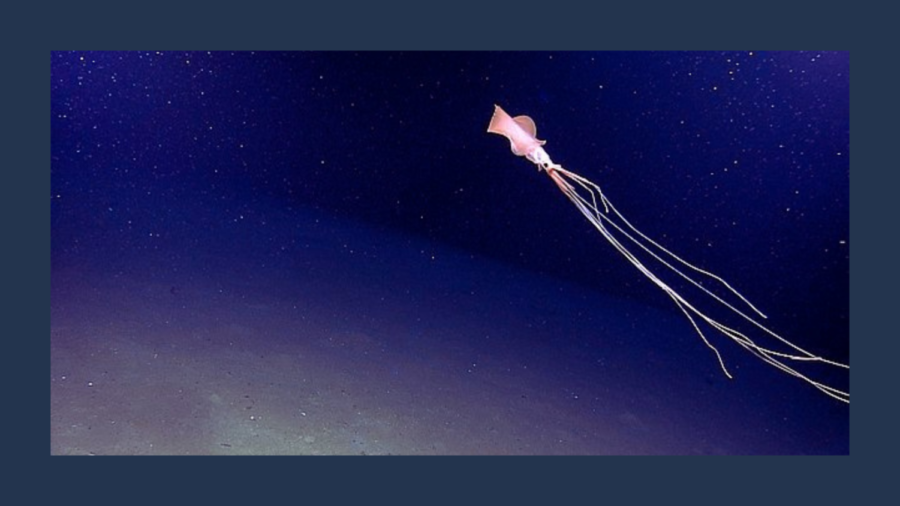The mystery of the Magnapinna squid
May 26, 2023
Discovered in 1907, the Magnapinna, or “bigfin” squid is one of the most elusive cephalopods out there. Because of how deep these squids are found in the ocean, we have very little footage and information. Despite being discovered well over 100 years ago, the bigfin squid didn’t find itself on the public radar until 2001. This was the year that a ten-minute, high-quality video of the species was filmed off the coast of O’ahu Hawaii at a depth of over 3,000 meters.
The reason that this species of squid in particular has a lot of buzz surrounding it is because we have never seen another creature quite like this. Before this year, the only video footage we had of the bigfin squid was all of the juveniles. Despite them being not fully mature, they still managed to have an average length of around eight meters, or 26 feet. Their most noticeable feature is, of course, the two large fins on either side of their mantle. These squid also have long, tentacle-like appendages called filaments. Scientists believe that the bigfin squid uses these filaments as a sort of fishing line to catch prey. Despite their size, there is no squid that has the ability to eat a human. They position themselves vertically in the water and lower the filaments until they feel their next meal brush up against them. Unfortunately, we have no footage of this actually happening, so as of right now, it’s just a theory.
By far the most famous footage of the bigfin squid was recorded in 2007 in a drilling site over 7,000 meters down off the coast of Houston, Texas. The video shows the squid positioned upright, as previously mentioned, with four of its tentacles pointing straight out, and then bending down at a right angle. This position is how they got another name for themselves, the elbow squid. To no one’s surprise, we don’t know why their tentacles bend the way that they do.
If you’ve ever seen a picture or video of the bigfin squid, they look very alien. Naturally, when we see something like this for the first time, one of the first thoughts that comes to mind is, “Are they dangerous?” Well, we aren’t sure.
When scientists first started sending ROVs, or Remotely Operated Vehicles, down into the ocean to try and capture footage of these squids, they did some experimenting to see what the temperaments of these massive cephalopods were. To see how the squid would react, scientists drove the ROV straight into the filaments of a bigfin squid. There was absolutely no physical reaction as if the squid didn’t even notice. Because of this, we came to the conclusion that, despite reaching an estimated 50 ft long, these creatures are completely harmless to humans.
However, in March of 2023, a brand new, eight-minute-long, silent video of a bigfin squid was released. This video showcased behaviors never seen before in the bigfin squid. The squid was thrashing around violently, with its tentacles and filaments reaching in every direction. Some scientists believe that the squid in this particular video was either attacking or defending itself.
Unfortunately, this is about where our knowledge of the magnapinna squid ends. Since they live so deep in the ocean and are very elusive creatures, we still have a lot more to learn about them and their behaviors.





































Matt • Mar 1, 2025 at 3:32 am
I thought the giant squid was the sperm whales reason for having circular scars all around its mouth. Most squids are opportunistic feeders so why wouldn’t a human ever be susceptible to a hungry giant or colossal squid when they are more than capable ?
Atlas • Mar 11, 2025 at 2:24 pm
Humans couldn’t go too far into the ocean without being crushed by the water pressure, even with submarines.